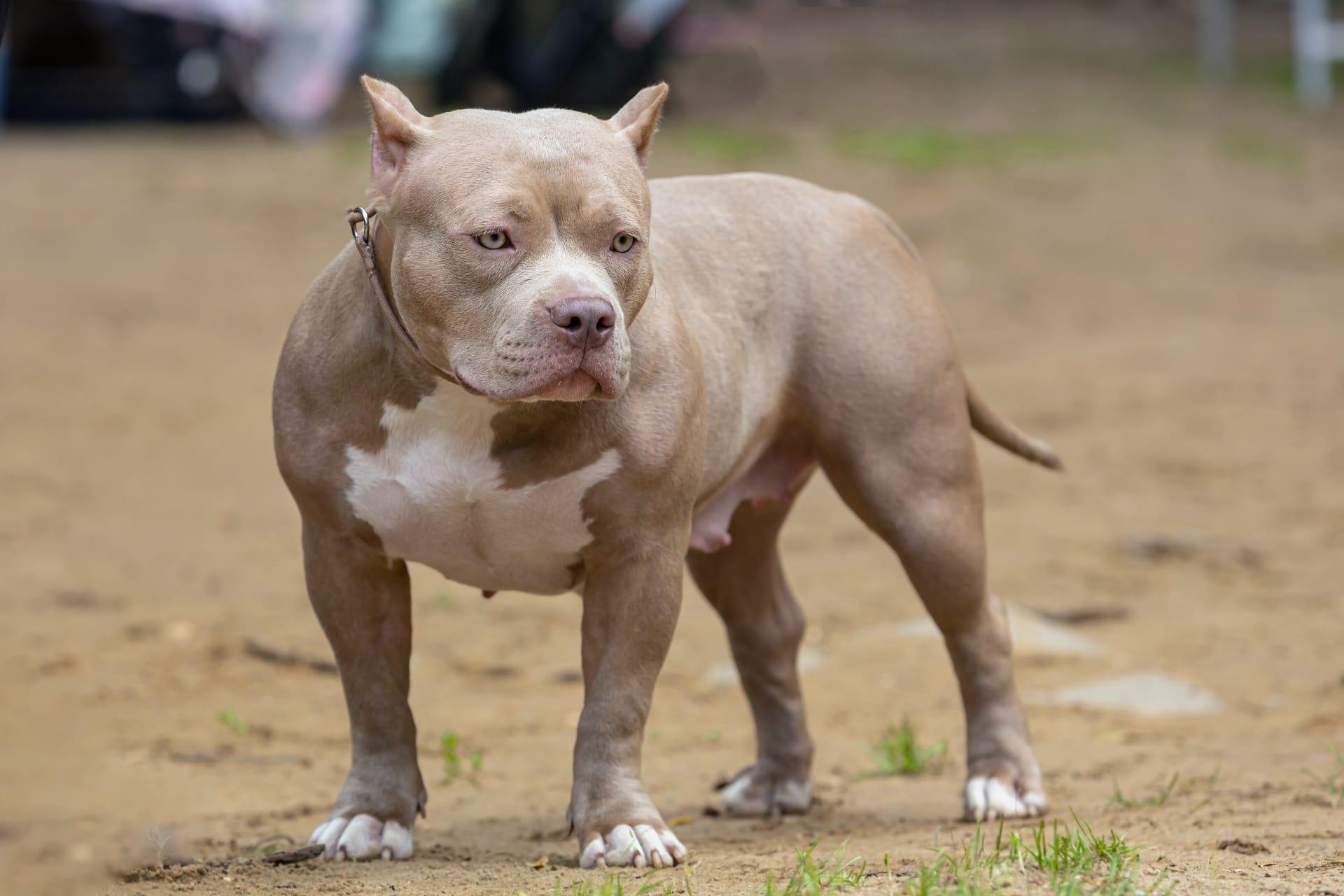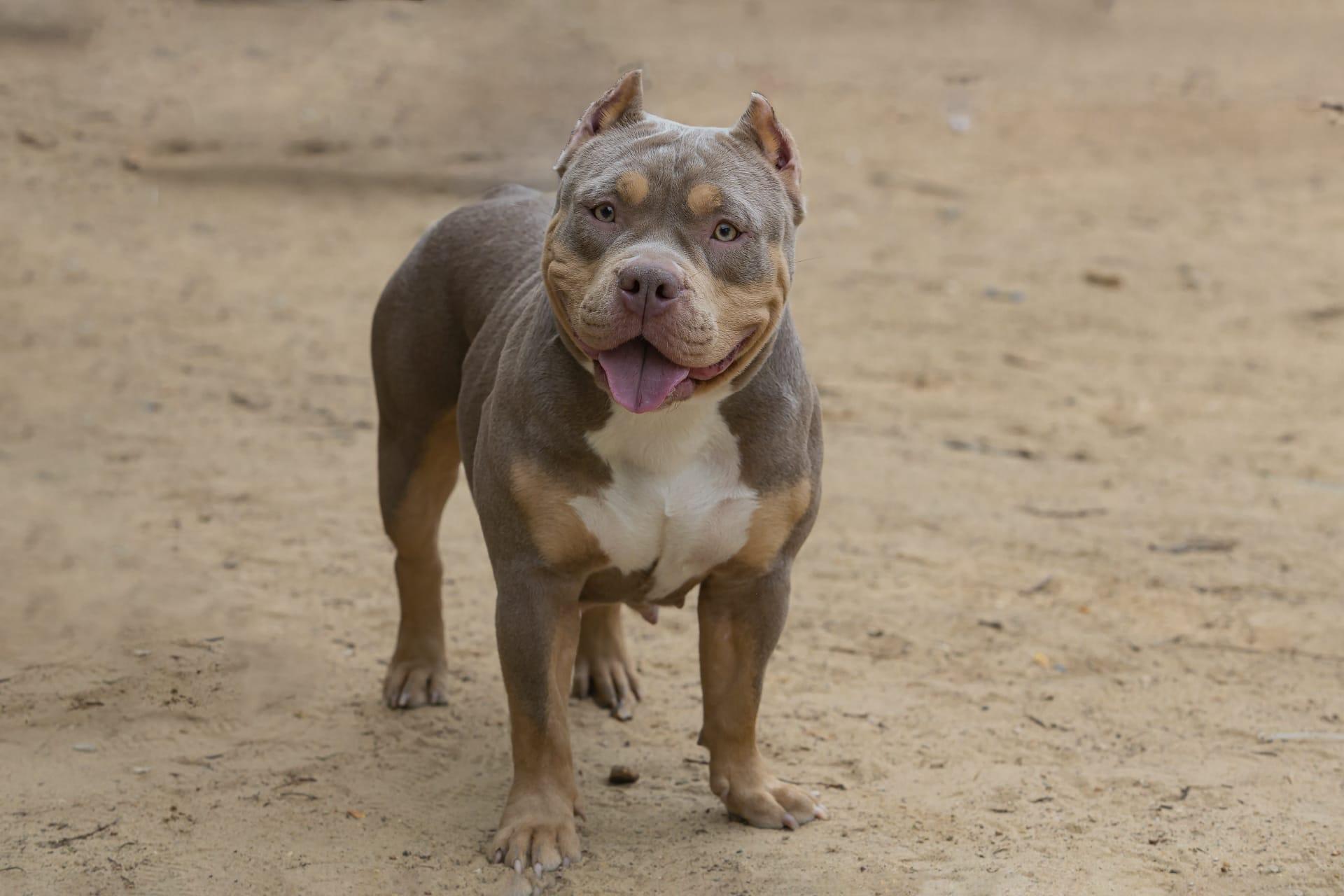Pitbull
- Home /
- Mini Encyclopedia /
- Animal /
- Pitbull
1
The term "Pitbull" encompasses several breeds of dogs that are known for their muscular build and square-shaped heads. Predominantly, this category includes the American Pit Bull Terrier, the American Staffordshire Terrier, the Staffordshire Bull Terrier, and sometimes the American Bulldog. These breeds share a common ancestry, originating from the British Isles where they were initially bred for bull-baiting and later for farm work and companionship. Their physical characteristics are marked by a sturdy frame, with adult males typically weighing between 35 to 65 pounds (15.8 to 29.5 kilograms) and standing around 17 to 21 inches (43 to 53 centimeters) tall at the shoulder.
Pitbull-type dogs are distributed widely across the globe, particularly prevalent in the United States. Their adaptability to various environments and roles, from companionship to work in law enforcement and search and rescue, has contributed to their widespread presence. Despite facing legislative restrictions in some areas due to perceived aggressiveness, these dogs are found in diverse settings, from urban apartments to rural farms, reflecting their versatility and enduring popularity among dog enthusiasts.

2
A common misconception about Pitbulls is their "lockjaw" capability, which suggests that once a Pitbull bites down, it cannot release its grip. This myth perpetuates the belief that these dogs are inherently more dangerous than other breeds.
The truth is, Pitbulls do not have any unique physical mechanism that would enable a "lockjaw" function. Like any other dog breed, their jaw structure allows for a wide range of motion and does not lock in place. Studies and canine experts affirm that Pitbulls' biting strength is comparable to other breeds of similar size and build, and they are capable of releasing their bite voluntarily like any other dog.

3
The relationship between Pitbulls and humans has been multifaceted and evolving. Historically bred for physically demanding tasks, these dogs have demonstrated remarkable loyalty, intelligence, and eagerness to please their owners. This has made them valued companions and working dogs in various fields, including but not limited to, therapeutic settings where their gentle nature shines through.
Despite facing societal challenges, including breed-specific legislation and negative stereotypes, many Pitbulls have become beloved family members and service dogs. Their ability to form deep bonds with humans, combined with their resilience and adaptability, underscores the potential for positive, mutually beneficial relationships between Pitbulls and their human counterparts.

4
The origins of Pitbull-type dogs can be traced back to the early 19th century in the United Kingdom, where breeds such as the Old English Bulldog and terriers were crossed to create dogs that combined the Bulldog's strength and the terrier's agility. These dogs were initially used in blood sports such as bull-baiting, but after such sports were banned in 1835, they were repurposed as farm dogs and later as family pets.
As Pitbulls made their way to America, they underwent further evolution, both in their physical traits and roles within society. In the United States, they were employed as catch dogs for semi-wild cattle and hogs, as well as family protectors and companions. Over time, selective breeding has emphasized traits such as loyalty, courage, and a high tolerance for pain, shaping the modern Pitbull into a dog that is both strong and gentle, capable of serving in diverse roles from therapy and service to companionship.

5
Film: "The Champions" is an American documentary released in 2015, focusing on the Pitbulls rescued from the illegal fighting ring operated by NFL player Michael Vick. It highlights the efforts to rehabilitate and rehome these dogs, challenging the negative stereotypes associated with the breed and showcasing their capacity for recovery and affection.
Book: "Pit Bull: The Battle over an American Icon" by Bronwen Dickey, published in the United States in 2016, delves into the complex history of the Pitbull breed in America. It explores the cultural transformation of these dogs from esteemed companions to controversial figures, providing a nuanced perspective on the breed and the socio-political factors influencing their reputation.
Book: "I'm a Good Dog: Pit Bulls, America’s Most Beautiful (and Misunderstood) Pet" by Ken Foster, also published in the United States in 2012, offers a tribute to Pitbulls. Through personal stories and photographs, Foster highlights the enduring loyalty, beauty, and resilience of these dogs, countering the myths and celebrating the positive relationships between Pitbulls and their owners.